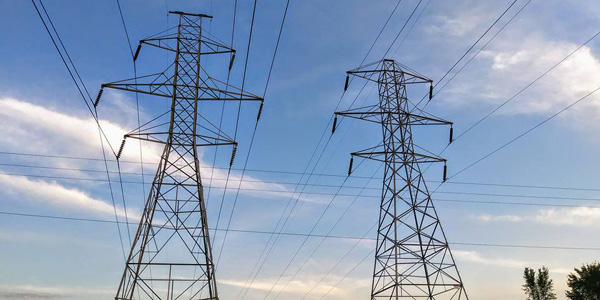By Amanda Durish Cook
MISO and PJM will pursue two separate interregional studies this year to identify potential joint transmission projects, the RTOs said last week.
One six-month study process would look for small cross-border projects, while a two-year effort would seek to uncover potential major interregional projects, stakeholders learned during a May 11 conference call held by the RTOs’ Interregional Planning Stakeholder Advisory Committee (IPSAC).
2nd Round of TMEPs
The shorter-term study will identify targeted market efficiency projects (TMEPs), a project category the RTOs created in 2017, subsequently approving a five-project portfolio in December. This category of smaller interregional projects is intended to target historical congestion along the RTOs’ seams.
Staff from both RTOs said the study would concentrate on historically binding flowgate constraints that have amassed at least $1 million in congestion charges. MISO and PJM have experienced about $500 million in congestion payments on more than 200 market-to-market flowgates in 2016 and 2017. PJM interregional engineer Alex Worcester said $200 million of that congestion will be addressed by planned upgrades, both by regional fixes and the five planned TMEPs.
“But there’s a bulk $300 million of congestion left on the seams that can be investigated,” Worcester said.
The second TMEP study will be conducted much like the first, and the RTOs hope to complete review of historical congestion along the seams by the end of June, Worcester said. The study will examine why flowgates were binding and determine whether transmission outages caused the problem.
The RTOs have committed to working with equipment owners associated with the congestion this July to zero in on which equipment is limiting the flow of electricity and discuss potential upgrades. By October, the RTOs hope to have completed an evaluation of project ideas and submit project recommendations for approval by their respective boards of directors.
TMEPs must cost less than $20 million, be in service within three years of approval and provide historical congestion relief that is equal to or greater than construction cost within the first four years of operation. The construction cost is divided between MISO and PJM based on the percentage of congestion relief benefits.
The two RTOs approved a $20 million, five-project TMEP portfolio last year, with projects in Illinois, Indiana, Michigan and Ohio; all are upgrades to existing systems. Project costs are on average allocated 69% to PJM and 31% to MISO, based on projected benefits, which are expected to reach $100 million. (See FERC Conditionally OKs MISO-PJM Targeted Project Plan.)
Northern Indiana Public Service Co.’s Miles Taylor asked if MISO and PJM would consider speeding up the process to get projects approved by the end of summer.
MISO’s Adam Solomon said his RTO may be open to the idea, but he added it would be difficult to expedite the process, considering that the grid operators must complete an analysis and obtain approval from both boards before moving forward with TMEPs.
Some stakeholders asked the RTOs to consider generation retirements when studying historical seams congestion, as retiring generation could alleviate congestion on its own. Solomon said the study process is already equipped to collect that type of information.
2-Year IMEP Study
MISO and PJM have also agreed to begin a more traditional two-year coordinated system plan study to identify more expensive seams projects called interregional market efficiency projects (IMEPs), none of which have been approved by the RTOs.
For the more involved study, Worcester said each RTO will develop an economic regional model and study project suggestions submitted by stakeholders. IMEP proposals must be submitted to both regional processes, with the proposal window open from Nov. 1, 2018, to Feb. 28, 2019, according to PJM Tariff rules. Board approval of potential IMEPs would take place by the end of 2019.
Before approval, proposals will be reviewed multiple times: first to determine eligibility, then to calculate interregional cost allocation and the share of regional benefits. A third review tests the projects against each RTO’s regional criteria, while the fourth and fifth evaluations involve getting approval from both the staff and boards for both RTOs.
“It seems like one of the goals MISO and PJM have is to remove the triple hurdle. What I’m seeing here is a five-hurdle,” Wind on the Wires’ Natalie McIntire remarked. “It just seems like we should have less review.”
Worcester said only three of the reviews result in a pass/fail outcome for a project. The first review simply determines if the project would be eligible under IMEP requirements, while the second only serves to get an idea of project cost benefits, he said.
MISO and PJM last conducted a coordinated system plan in 2016 and 2017, ending the process without recommending any projects. One serious contender, a proposed 30-mile, 138-kV line near the Indiana-Illinois border, ultimately failed the joint 5% generation-to-load-distribution factor test, which requires each RTO to show that at least one of its generators has at least a 5% impact on the affected flowgate. (See MISO, PJM Ponder Interregional Study.)
Axe 5% GLDF Test
As a result of the last two-year study, the RTOs plan to revise their joint operating agreement to remove the 5% generation-to-load-distribution factor test, instead letting each of their regional processes determine flowgate impacts. Solomon said the edits will also remove references to a MISO-PJM joint model study requirement, as the joint model was eliminated in FERC compliance filings in response to a 2013 complaint from NIPSCO on the RTOs’ interregional process. (See “No Joint Model,” FERC Signals Bulk of NIPSCO Order Work Complete.)
Solomon said MISO and PJM want the revisions in place before opening the IMEP project proposal window in November. For that to happen, Solomon said the changes should be on file with FERC no later than July.





